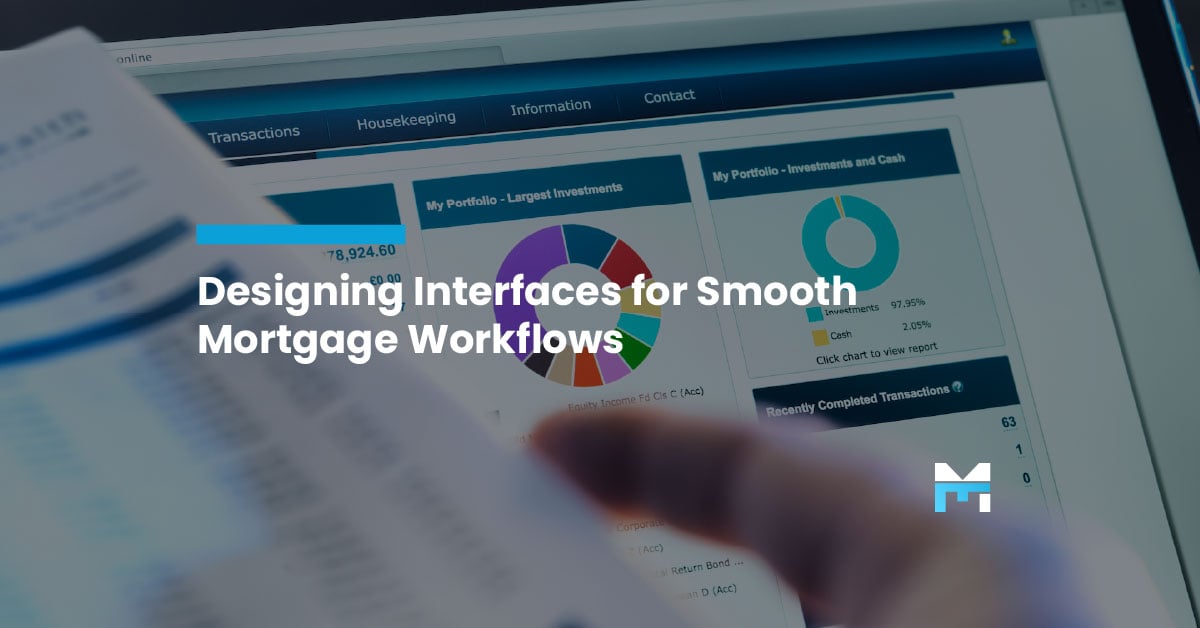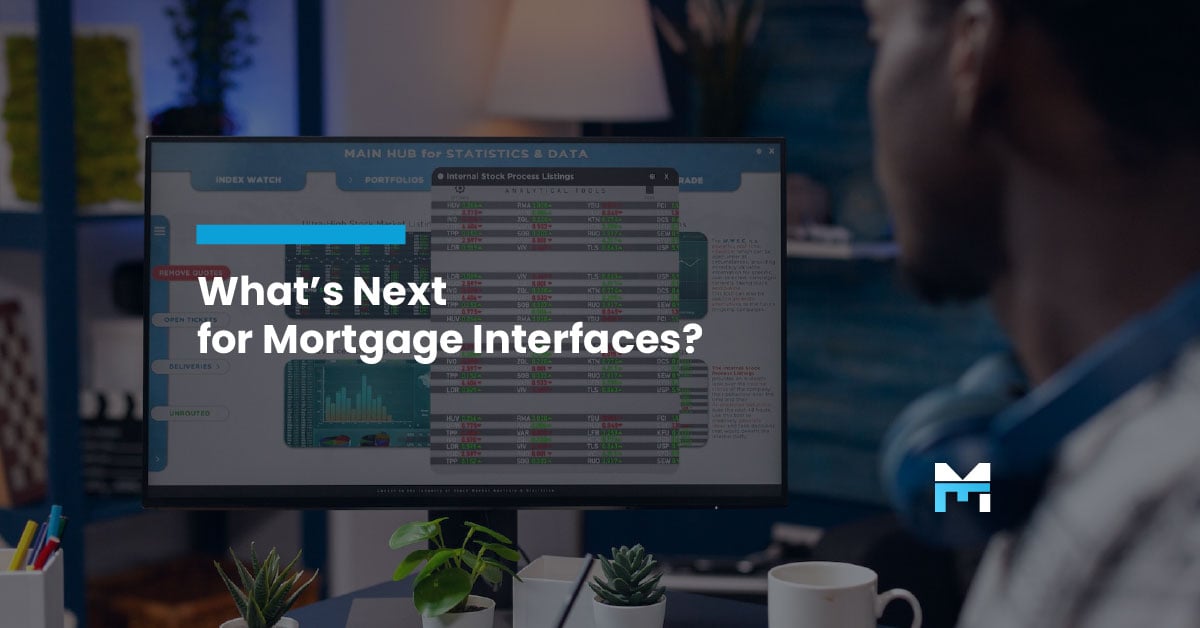Smooth Mortgage Workflows: Designing Interfaces That Boost Speed and Strengthen Compliance
Ever wonder why your borrowers keep abandoning applications at the 75% mark? The answer isn't complicated…it's your workspace interface. When...
Information Security Compliance
Add security and compliance to Microsoft 365
BI Reporting Dashboards
Realtime pipeline insights to grow and refine your learning operation
Integrations for Banks & Credit Unions
Connect LOS, core platforms, and servicing system
Productivity Applications
Deploy customized desktop layouts for maximum efficiency
Server Hosting in Microsoft Azure
Protect your client and company data with BankGrade Security
5 min read
Justin Kirsch : Nov 26, 2025 1:00:01 PM

Picture this: Your loan officer just spent 20 minutes entering the same borrower information into three different systems. Meanwhile, your processor is cross-referencing data between Encompass and your credit bureau interface, only to discover a discrepancy that requires, you guessed it, more manual entry. Sound familiar?
If you're nodding your head right now, you're not alone. Duplicate data entry remains one of the biggest productivity killers in mortgage lending, eating up valuable time and creating opportunities for costly errors. The good news? Well-designed interfaces can transform this nightmare into a streamlined process where data flows seamlessly between systems.
This isn't just about saving a few minutes here and there. When done correctly, interface optimization can reduce processing time by up to 70% while dramatically improving accuracy. Ready to discover how your team can work smarter, not harder?
Think of interfaces as translators between different software systems. In the mortgage world, an interface allows your loan origination system (LOS), like Encompass, to "talk" directly with credit bureaus, income verification services, property valuation companies, and dozens of other third-party providers.
Without proper interfaces, your team becomes human copy-paste machines, manually transferring data from one system to another. With smart interface design, information entered once can populate across multiple systems automatically, eliminating redundancy and reducing errors.
The mortgage industry processes millions of loans annually, each requiring data from 10-15 different sources on average. When you multiply those touchpoints by manual entry requirements, the inefficiency becomes staggering.
Beyond the obvious time waste, duplicate data entry creates a cascade of problems that impact your bottom line:
Error Multiplication: Every manual transfer increases the chance of typos, transposed numbers, or missed information. One small mistake can delay closing by days or weeks.
Compliance Risks: Manual processes make it harder to maintain audit trails and ensure consistent data across all systems. Regulators don't appreciate inconsistencies between your LOS and supporting documentation.
Employee Burnout: Nobody becomes a loan officer or processor to spend their day copying and pasting. Repetitive data entry tasks drain morale and drive talented staff toward competitors.
Opportunity Costs: Time spent on manual entry is time not spent on revenue-generating activities like customer service, business development, or complex problem-solving.
Studies show that automated data integration can reduce underwriting time by up to 70% while improving accuracy rates to 99%. Those aren't just impressive statistics...they represent real dollars in your pocket and happier customers.
Smart interface design creates seamless data flow between systems through several key mechanisms:
Real-Time Data Synchronization: When borrower information changes in Encompass, integrated interfaces automatically update connected systems. No more manual updates across multiple platforms.
Automated Document Population: Interfaces can pull data from various sources to pre-populate forms, applications, and disclosures. Your team reviews and approves rather than typing from scratch.
Bidirectional Communication: Advanced interfaces don't just send data; they also receive it. Credit scores, property values, and income verification results flow directly back into your LOS without human intervention.
Standardized Data Formatting: Interfaces handle the technical heavy lifting of converting data between different formats and requirements, ensuring compatibility across all systems.
This connects directly to our previous discussion on Smooth Mortgage Workflows: Designing Interfaces that Boost Speed and Strengthen Compliance, where we explored how proper interface design enhances both efficiency and regulatory adherence.
Not all interfaces deliver equal value. Focus your efforts on these high-impact connections:
Credit Bureau Interfaces: Automatically pull and refresh credit reports throughout the loan process. Advanced interfaces can trigger alerts when scores change significantly.
Income and Employment Verification: Connect with services like The Work Number or Equifax Workforce Solutions to streamline employment and income verification without manual data entry.
Property Valuation Systems: Interface with appraisal management companies and automated valuation models to receive property data directly in your LOS.
Document Management Integration: Connect Encompass with your document imaging system so files uploaded in one location appear automatically in the other.
Investor Delivery Systems: Streamline loan delivery to investors like Fannie Mae or Freddie Mac with interfaces that format and transmit data according to specific requirements.
Closing and Settlement: Connect with title companies and settlement service providers to share loan details and receive closing documents electronically.
Successfully implementing interfaces requires more than just technical setup. Follow these proven strategies:
Start with High-Volume Processes: Identify which data entry tasks consume the most time and implement interfaces first. Maximum impact with minimal complexity.
Involve End Users Early: Your loan officers and processors know where the pain points are. Include them in interface planning to ensure solutions address real-world needs.
Plan for Data Mapping: Different systems often use different field names for the same information. Create detailed data mapping documents before implementation begins.
Test Extensively: Never deploy interfaces directly to production. Use test environments to validate data accuracy and system performance under various scenarios.
Train Thoroughly: Even automated processes require human oversight. Ensure your team understands how interfaces work and what to do when exceptions occur.
Monitor Performance: Track key metrics like processing time, error rates, and user satisfaction both before and after interface implementation.
Even well-intentioned interface projects can go sideways. Watch out for these common mistakes:
Over-Engineering Solutions: Complex interfaces with bells and whistles often break more frequently than simple, focused ones. Start basic and add features gradually.
Ignoring Data Quality: Interfaces amplify existing data problems. Clean up your core data before implementing automated transfers, or you'll just spread bad information faster.
Insufficient Error Handling: When interfaces fail (and they will occasionally), you need clear protocols for manual override and exception processing.
Vendor Lock-In: Some interface solutions make it difficult to switch providers later. Maintain flexibility by choosing solutions with standard APIs and data formats.
Neglecting Security: Automated data transfer increases cybersecurity risks. Ensure all interfaces meet your organization's security standards and compliance requirements.
Forgetting About Updates: Third-party systems change their requirements regularly. Plan for ongoing maintenance and updates to keep interfaces functioning properly.
Implementing effective interfaces requires deep technical expertise combined with intimate knowledge of mortgage workflows. That's where Mortgage Workspace shines as your strategic technology partner.
Our team has designed and deployed interface solutions for hundreds of mortgage companies, from small brokerages to national lenders. We understand the unique challenges of Encompass integration and have proven methodologies for eliminating duplicate data entry while maintaining compliance and security standards.
We don't just build interfaces...we partner with you to optimize your entire mortgage technology ecosystem. Our approach combines technical excellence with practical business insight, ensuring that your interface investments deliver measurable ROI.
Ready to transform your mortgage operation from a manual data entry factory into a streamlined, automated powerhouse? Let's discuss how Mortgage Workspace can help you eliminate duplicate entries and accelerate your loan processing.
Contact Mortgage Workspace today for a free consultation on optimizing your Encompass interfaces. Your team will thank you, your customers will notice the difference, and your bottom line will reflect the improvement.
1: How long does it typically take to implement new interfaces in Encompass?
Implementation timeframes vary based on complexity, but most single interfaces take 2-6 weeks from planning to go-live. More complex multi-system integrations may require 8-12 weeks. The key is thorough planning and testing before deployment.
2: Will interfaces work with our existing third-party vendors?
Most established mortgage service providers offer API connections or standard interface formats. However, some legacy systems may require custom development. During planning, we evaluate all your current vendors and recommend the most efficient integration approach.
3: What happens if an interface goes down during peak processing times?
Robust interface solutions include built-in redundancy and failover procedures. Additionally, manual override capabilities ensure business continuity. We recommend establishing clear protocols for interface exceptions and maintaining backup processes for critical functions.

Ever wonder why your borrowers keep abandoning applications at the 75% mark? The answer isn't complicated…it's your workspace interface. When...

The mortgage industry has a reputation for being slow, complicated, and buried in paperwork. For decades, the pre-qualification process felt more...

Think your mortgage platform is modern now? Fast-forward five years, and today’s tools might feel like dial-up internet compared to what’s coming. In...